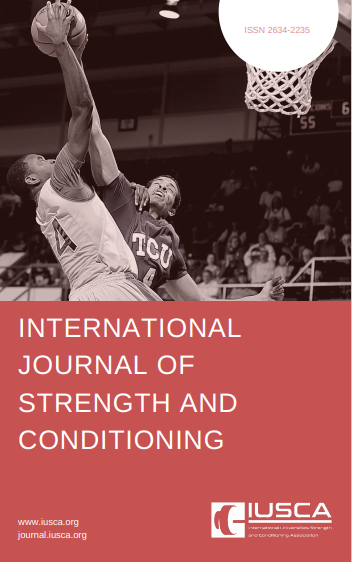Body Composition and Power Output In NCAA Division I American Football Linebackers Throughout a Competitive Season
DOI:
https://doi.org/10.47206/ijsc.v1i1.57Keywords:
Dual-Energy X-Ray Absorptiometry; Squat Jump; Athletes; Lean Mass; Fat Mass; Vertical JumpAbstract
Body composition and power are impactful variables of athletic performance. However, few studies have assessed power and body composition changes from pre-, to mid-, to end-of-season in American Football linebackers. The purpose of this study was to determine how power and body composition respond to a competitive season in Division I Football Championship Series (FCS) American football linebackers. Participants (n=9; Age=19.7 ± 1.5 years; Weight=101.5±11.6 kg; Height=183.3±5.2 cm; [Body Fat percent (BF %) =21.31 ± 6.02%)] performed a Dual-Energy X-ray Absorptiometry (DXA) scan, and power was assessed via three vertical jumps and squat jumps at 40, 60, 80, and 100 kg at three time points: a) 1 week prior to their regular season, b) 2 days after the bye week in the middle of the season, and c) 1 week prior to the completion of the season. An Analysis of Variance (ANOVA) revealed no significant differences (p ≤ 0.05) in power or body composition. These results support past research, indicating power and body composition can be maintained throughout a competitive season. However, more research is needed to determine the optimal programming methods to maintain or improve athletic performance via optimization of body composition and power during a competitive season.
Metrics
Downloads
Published
Issue
Section
License
Copyright (c) 2021 Kurt McDowell

This work is licensed under a Creative Commons Attribution 4.0 International License.
Authors retain copyright of their work, granting IJSC a license to publish and distribute. All articles are distributed under the Creative Commons Attribution 4.0 License. We clearly state any fees associated with submissions or access for readers. For copyright or licensing queries, stakeholders can reach out to journal@iusca.org.



